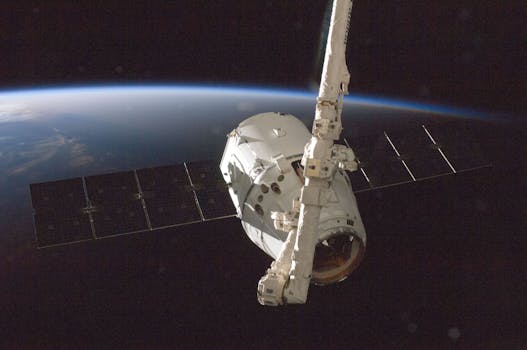LEO Satellites: The Future of Space-Based Connectivity

LEO Satellites: The Future of Space-Based Connectivity
Low Earth Orbit (LEO) satellites are revolutionizing the way we communicate and access information. With their ability to provide high-speed, low-latency connectivity, LEO satellites are poised to play a major role in the future of space-based communications. LEO satellites are a type of satellite that orbits the Earth at an altitude of around 160 to 2,000 kilometers, which is much lower than traditional geostationary satellites. This lower orbit allows LEO satellites to provide faster and more reliable connectivity, making them ideal for a wide range of applications, including broadband internet, mobile communications, and Earth observation.
The use of LEO satellites is becoming increasingly popular, with many companies, including SpaceX, OneWeb, and Amazon, launching their own constellations of LEO satellites. These constellations are designed to provide global coverage, with thousands of satellites working together to provide seamless and uninterrupted connectivity. LEO satellites are also being used for a variety of other applications, including navigation, weather forecasting, and remote sensing.
How LEO Satellites Work
LEO satellites work by using a network of satellites in low Earth orbit to provide connectivity to users on the ground. Each satellite in the constellation acts as a relay station, receiving signals from users and transmitting them to other satellites or to ground stations. This allows data to be transmitted quickly and efficiently, with latency as low as 20-30 milliseconds. LEO satellites also use advanced technologies, such as phased arrays and beamforming, to provide high-gain and directional antennas, which enable them to communicate with multiple users simultaneously.
The benefits of LEO satellites are numerous. They provide faster and more reliable connectivity than traditional satellites, with lower latency and higher throughput. They also offer global coverage, making them ideal for applications that require connectivity in remote or underserved areas. Additionally, LEO satellites are more cost-effective than traditional satellites, with lower launch costs and longer lifetimes.
Applications of LEO Satellites
LEO satellites have a wide range of applications, including broadband internet, mobile communications, and Earth observation. They are also being used for navigation, weather forecasting, and remote sensing. One of the most promising applications of LEO satellites is in the provision of broadband internet to underserved communities. With the ability to provide high-speed and low-latency connectivity, LEO satellites can help to bridge the digital divide and provide access to information and opportunities to people around the world.
LEO satellites are also being used for mobile communications, providing connectivity to users on the go. They are ideal for applications that require low-latency and high-throughput, such as video streaming and online gaming. Additionally, LEO satellites are being used for Earth observation, providing high-resolution images and data on the environment, climate, and natural resources.
Challenges and Future Directions
Despite the many benefits of LEO satellites, there are also several challenges that must be addressed. One of the main challenges is the need for a large number of satellites to provide global coverage, which can be expensive and complex to launch and maintain. There are also concerns about the impact of LEO satellites on the environment, including the potential for space debris and interference with other satellites and systems.
However, despite these challenges, the future of LEO satellites looks bright. With the development of new technologies and the launch of new constellations, LEO satellites are poised to play an increasingly important role in the future of space-based communications. As the demand for high-speed and low-latency connectivity continues to grow, LEO satellites will be at the forefront of efforts to provide seamless and uninterrupted connectivity to users around the world.



